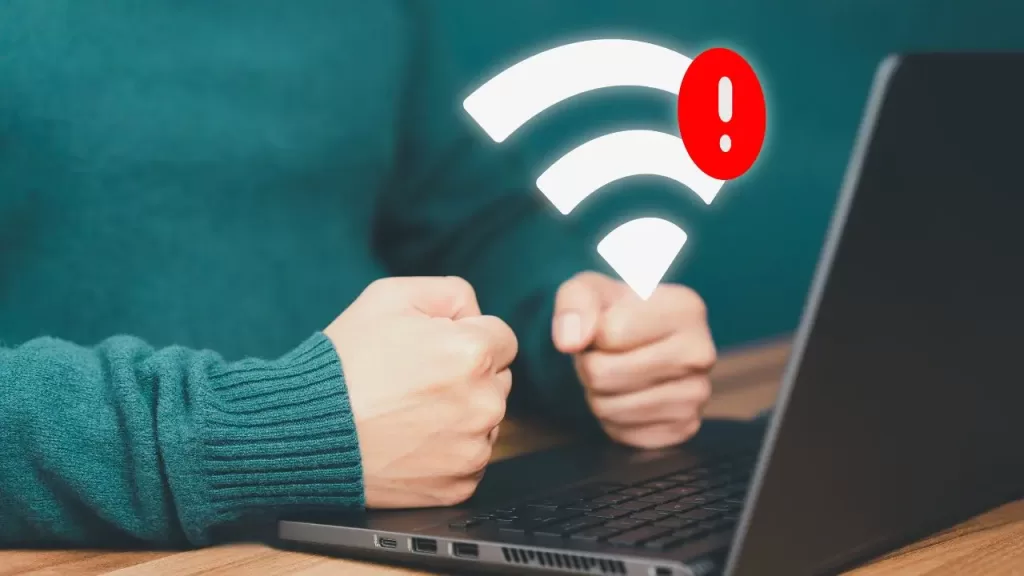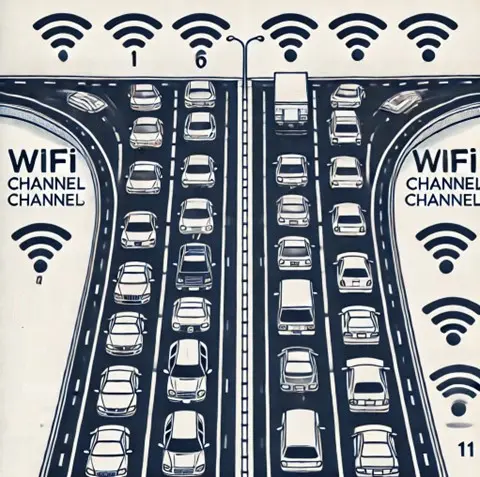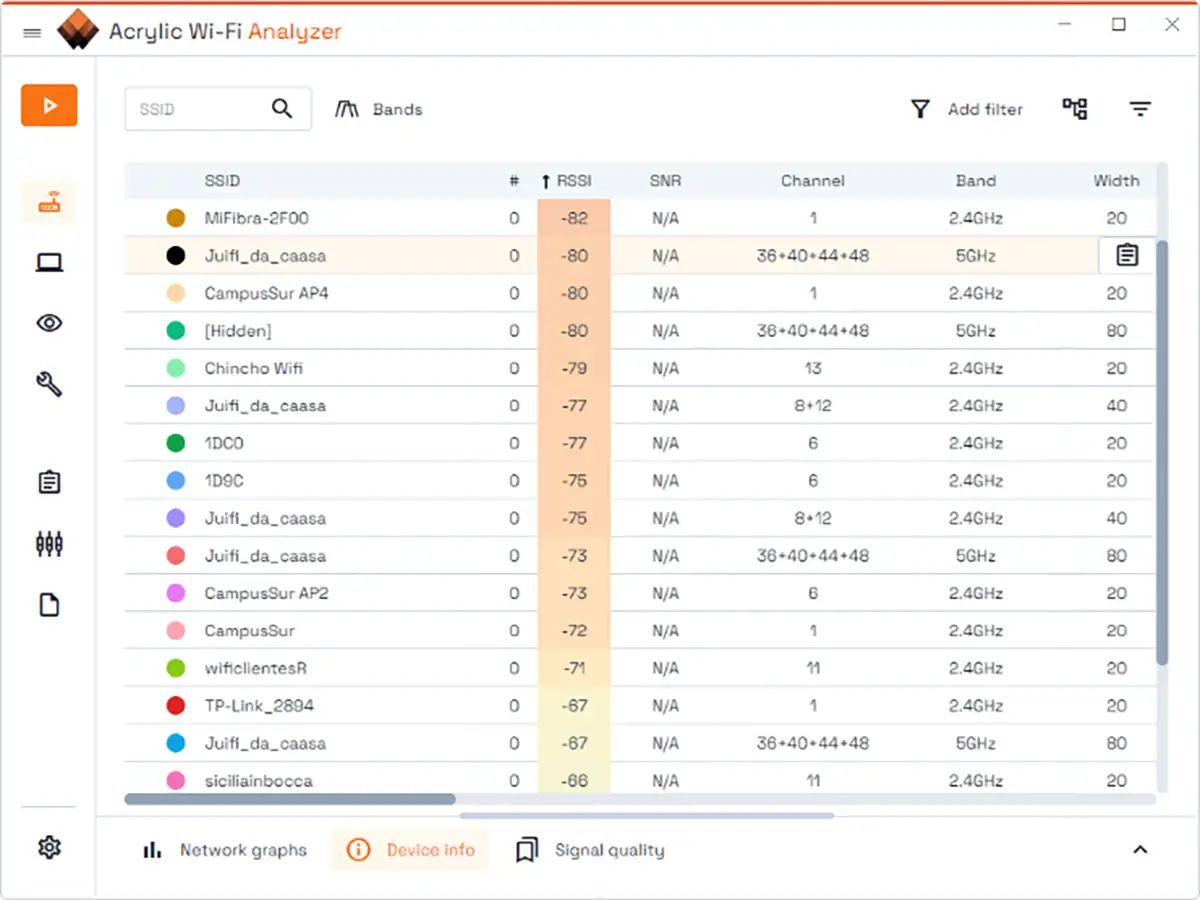Forbidden WiFi channels by country: avoid using them, or you will be exposed to penalties
Table of Contents

Connecting to a WiFi network is, on most occasions, a simple task to which not much attention or time is paid. The automation of processes and the ease of use of the devices provide an environment that is accessible to almost all users.
However, this ordinary action requires certain knowledge to avoid unintentionally committing a crime. One of the potential scenarios in which this can happen is related to the use of WiFi channels whose use is not permitted.
These restrictions, moreover, do not apply equally in all countries, with differences being established in each region. It is, therefore, essential to be aware at all times of the legislation on wireless connections in the place from which you want to access the network.
In this article, we explain the reason why certain WiFi channels are prohibited and how to verify their use before connecting to the Internet.
1. Let’s start at the beginning. What is a WiFi channel?
The number of devices connecting to the network wirelessly is growing all the time. Over the years, computers, cell phones and consoles have been joined by other devices such as smartwatches, home appliances and home automation devices.
In order to allow these devices to converge simultaneously without interrupting each other, so-called WiFi channels have been created. These are, in short, sub-regions of the different frequency ranges in which wireless connections operate. To facilitate identification, each channel is assigned a number.
By way of illustration, we could compare the functioning of WiFi channels to that of lanes on a highway. They serve to organize the traffic generated and reduce possible saturation of connections. Thus, when a channel is congested, there is the possibility of finding another one in its place, improving the online experience and reducing the congestion of the first one.

However, one thing to bear in mind is that these channels do not operate in a watertight environment and may cause interference with other wireless technologies. For this reason, certain WiFi channels have been defined as prohibited in some countries. But what are they?
2. Prohibited WiFi channels: an international blocklist
Although WiFi technology is global in nature and certain common specifications are followed, each country has its regulations or rules regarding wireless communications. This situation means that about 95% of the defined WiFi channels can be used worldwide. But what about the remaining 5%?
As a rule, banned WiFi channels are usually banned because of overlap with other specific technologies, which make use of particular frequencies in different countries. In other cases, the restriction may be due to the use of attachments that increase the versatility of WiFi communications.
By way of summary, we list below some of the prohibited WiFi channels by frequency band.
2.1. 2.4 GHz band
- Channel 14. The use of this WiFi channel is directly forbidden in almost all countries in the world except Japan. That’s because this channel operates at 2.484 GHz, a frequency very close to that used by technologies such as radar systems, military communications and radio astronomy services. In Japan, its use is exclusively for devices configured in the 802.11b standard, with limited power.
- Channels 12 and 13. These two channels are free to use in most countries. However, in the United States, their use is limited due to their overlap with satellite radio waves.
2.2. 5 GHz band
- Channels 52-140. This wide range of WiFi channels, in many countries, requires the use of the DFS function, or dynamic frequency selection. This process allows us to verify their availability, identifying those WiFi channels that are temporarily prohibited because their use is shared with, for example, the AEMET weather radars in Spain. When it detects that a channel is busy, it automatically switches to another, disconnecting the device from the network for a period of time that is usually around 60 seconds.
- Channels 149-165. These are the so-called UNII-3 channels located at the higher frequencies within the 5 GHz band. With the exception of the United States, in most countries, these are prohibited WiFi channels or have limited power.
2.3. 6 GHz band
As this is a very young technology, the channels in this frequency band are available only in those countries that have made it available so far.
Almost all European countries and most of the Americas have already authorized the use of the 6 GHz band for WiFi wireless communications. On the other hand, very few regions in Africa and Asia have already joined this trend.
To check which frequencies are available in each region, just access the website provided by the WiFi Alliance, which shows the situation in each country.
3. How to check which WiFi channels are prohibited in each region
To find out which WiFi channels are banned in any region, you should go to the corresponding Wireless Regulatory Organization. Almost all countries have one in charge of monitoring and supervising the use of the frequency spectrum in their territory.
The main ones worldwide are:
- The FCC (Federal Communications Commission), in charge of regulating interstate and international communications in the United States.
- The ETSI (European Telecommunications Standards Institute) has more than 900 member organizations operating in more than 60 countries.
- The MIC (Ministry of Internal Affairs and Communications), a cabinet ministry that oversees, among other things, Japan’s telecommunications.
In addition to the prohibited WiFi channels, there is a very simple formula to find out which are the different power limitations in each country.
To do this, after connecting to the access point, we can configure it for the region or country we are in. This formula will provide us with the allowed parameters and we will be able to avoid invalid or illegal configurations.

It’s especially important if we buy a new router or access point over the Internet that is shipped from another country or we buy a global or country-specific version, as it may come configured with the country code. Therefore its parameters and it will be necessary to change it to avoid problems.
4. How to manually check the WiFi channel being used

Normally, the routers and access points that are installed by integrators and Internet providers are already configured to work according to the legality in force in their region. This only authorizes access to the permitted WiFi channels, allowing you to surf the Internet with greater peace of mind.
Even so, there is a remote possibility that the configuration is not the right one or that a mistake has been made when installing the device. In this scenario, the best way to find out if you are surfing on one of the prohibited WiFi channels is to use an advanced analysis tool, such as Acrylic WiFi Analyzer.
This software allows you to verify firsthand the channel on which our connection to the network is hosted. In addition, it is also possible to identify the ‘Country code’ parameter present in the Management Beacon packets issued by the router. This variable indicates the region in which the communication is being established, which implies a configuration to comply with local regulations.
5. The consequences of not knowing which WiFi channels are forbidden
If you inadvertently or consciously use any of the WiFi channels prohibited in the region where you are located, you are in violation of local laws and regulations. If you are reported, you could be subject to a substantial fine.
These penalties can range from €500 to €100,000, with penalties of up to €10,000 per day for as long as the illegal connection persists. As with everything else, the scale used to calculate penalties depends on each country or region.
Ignoring the prohibition of use does not exempt you from fines, which can be very high.
Even so, there are common factors that can increase the amount payable, such as the amount of interference generated. There are also noticeable differences depending on whether it is an individual user or a company or whether the infringement was intentional or accidental.
In short, the best strategy to avoid incurring illegality and suffering its consequences is to know, beforehand and with certainty, which WiFi channels are prohibited in the country from which you operate.